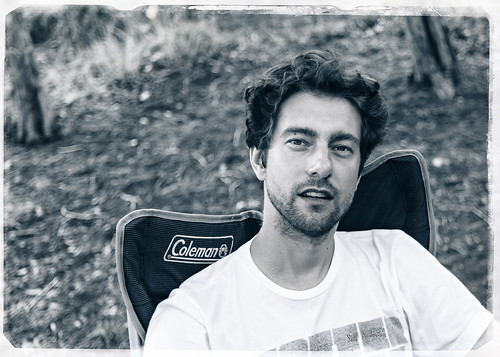
Lake Street Bridge During A Blizzard – toned blue.
I’ve made digital cyanotypes as long as I’ve used the Alien Skin “Exposure” plugin for Photoshop, but I’ve never made an actual one. The faux, digital versions are much different than actual cyanotypes. I’m intrigued though, the emotional impact of a blue-toned photograph is compelling.
The Phoenix artist Annie Lopez wanted to stand out among her contemporary peers. Instead of trying to invent something utterly new, she has been turning to a 174-year-old photographic printing process — cyanotypes, once used for copying architectural drawings — and giving it her own distinctive twist.
…
Making a cyanotype involves placing a negative image — which could be a photographic negative, or an object, as in a photogram — on treated paper or fabric. (Ms. Lopez took from her own life and her father’s battle with Alzheimer’s, using photocopies of medical books as well as comments made by family members.) After an iron-based solution is brushed on, the paper is placed under ultraviolet light, or in direct sun, to develop.
“One of the best-selling points of this exhibition is that cyanotypes are both underrepresented and trendy at the same time,” said Nancy Burns, who organized the Worcester show with Kristina Wilson of Clark University. “It’s very hip in contemporary art, when you start looking for it.”
The cyanotype process — from the Greek cyan, or “dark-blue impression” — was invented around 1842 by the British astronomer and chemist John Frederick Herschel (1792–1871). The benefits of the format were evident from the start.
(click here to continue reading Cyanotype, Photography’s Blue Period, Is Making a Comeback – The New York Times.)
I’ve also heard cyanotypes called “sun prints”:
Maybe you remember sun prints (also known as cyanotypes) from childhood. You set a leaf or flower on light-sensitive paper and exposed it to the sunlight for a few minutes. Your parent or teacher probably rinsed the print and showed you the results as they developed. A shadow of the specimen emerged—the color of the paper shifted from white to light blue. The final result was a white or bluish-white silhouette on dark blue paper.
When I first started paying attention to cyanotypes, I loved how they rendered familiar objects and shapes as bluish, shadowy abstractions. I also wondered why they reminded me of x-rays or architectural drawings. A description of the cyanotype process from Encyclopaedia Britannica shed some light.
(click here to continue reading Celebrated Summer: Making Sun Prints with Transparencies | Britannica Blog.)
Like I said, I’ve never made an actual cyanotype, yet. The images on this post are simply “toned blue” as a reminder to myself1 that I need to make a real cyanotype.

You’ve Got Everything, Polapan Blue

Across The Evening Sky All The Birds Are Leaving – Copper Blue

Just A Restless Feeling By My Side

Minister of Design and The Future, Blue
- like so much of my blog [↩]





